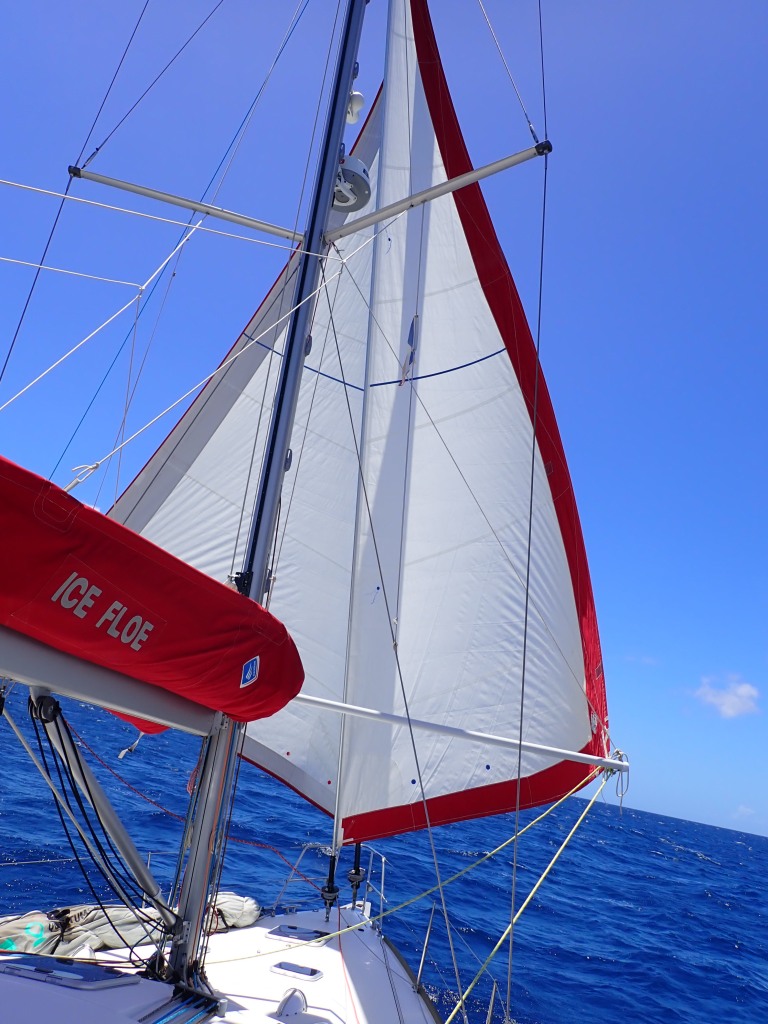We are currently anchored in Spanish Waters, Curaçao. We just returned from a lovely 3 day stay in Klein Curaçao, a small, uninhabited island composed of exposed and eroded coral.

Just recently, we saw flamingos flying and while en route and while staying on Klein Curaçao, we saw flocks of greater and greater size flying toward Bonaire. If you have never seen one flying they look like a long stick with some bright pink fabric fluffing towards the middle. We have seen flamingos on all of the ABC islands (Aruba, Bonaire, Curaçao)

Upon our arrival, Duhkxy was beside himself when he saw the beautiful expanse of white sand beach. After racing back and forth on the beach, he set to digging up ghost crabs. He rarely injures a crab as his intent is only to whisk them onto the sand so he can chase them to the water.


This ghost crab sat perfectly still and Duhkxy quickly lost interest.
During the day, the uninhabited island is visited by vessels ferrying people from cruise ships and resorts for a day of snorkeling, swimming, sunbathing, drinking and eating in this idyllic setting. Come around 4:00 or thereabout and the vessels all depart for Curaçao. Other than a couple of caretakers, visitors with overnight passes have the island to themselves. As one tour boat prepared to leave, the captain asked if we would like some pasta salads they had leftover from their lunch. Never to turn down a free meal we said “Sure” and he returned with large portions of two pasta salads; one of ziti, pesto and arugula; a second of couscous, beets, and a minty dressing – both quite lovely. He also supplied us with a massive amount of barbecued chicken skewers and spare ribs. What a treat – a gorgeous island to ourselves and, delicious food and no need to cook for several days!!!
We used our Hookah, that delivers air to about 20 feet to explore underwater. Like scuba diving, the Hookah allows you remain underwater slowly taking in the details.




















We walked the perimeter of the island along the white sand beach and round the “back side” with crashing waves and sea wrecks.




Sadly the winds and waves carried masses and masses of flotsam (debris carried in from near and far). It would take scores of people scores of days just to pick up the large litter and within a few years you would likely not see a great difference. I am certainly not advocating for NOT picking it up. George and I always choose at least one shoreline to clean, but this was far beyond our capabilities if we spent months here.
To give an idea of how far this litter can travel until it meets a shoreline, George and I found 5 hamburger beans that floated all the way from Africa.

We visited the lighthouse that is operational, but no longer inhabited.

Between the coasts the coral rock supports an array of plant species with a palette of oranges, greens and browns, as well as lizards and hermit crabs.

We enjoyed sun-filled days and periodic squalls, as is characteristic in these islands in January.




and one of the most beautiful sunsets ever

We look forward to visiting the island again with our daughter Allison, her husband Mike, and their children Riley and Tristan in February.























































































































































